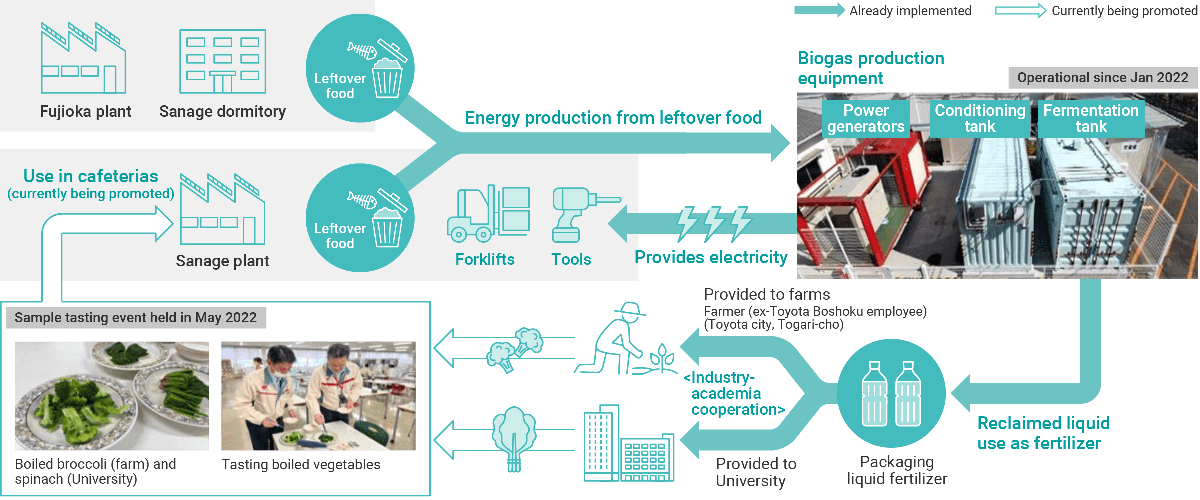Tackling climate change and food loss —
Biogas power generation
Introduction of biogas power generation, helping to stem global warming
The issue of climate change is a global challenge for society, and reducing greenhouse gas emissions and fossil fuel use is a mission that companies must fulfill. The Toyota Boshoku group has formulated the 2050 Environmental Vision and is promoting measures to achieve a sustainable global environment. One of our goals is “challenge of achieving zero CO2 emissions by 2050,” and as part of this goal, we introduced biogas power generation equipment at the Sanage Plant in January 2022.

Biogas power generation is a method of generating electricity from food waste (raw food scraps). Biogas is generated by breaking down food waste using the power of microorganisms known as methanogens. The resulting biogas is used to create energy (electricity and heat).
How biogas power generation works

Biogas power generation, like solar and wind power generation, is attracting attention as a method of power generation using renewable energy, and is being increasingly introduced by municipalities and companies.
The brainchild of a team comprising young company members, promoting activities to achieve 100% food recycling rate
Approximately 5,500 people work at the Sanage Plant, which has introduced biogas power generation. Food waste and leftovers are produced at the plant, and in an effort to eliminate this food loss, a project team led by young members proposed biogas power generation. They were eager to eliminate waste from food loss and convert discarded food scraps into new energy, thereby reducing the plant's environmental impact and fulfilling their responsibility to society. Having convinced senior management of the benefits, the required equipment was then installed.


100% food recycling rate achieved through the use of liquid fertilizer

Having gained a solid response, now looking to make further advances toward the creation of a recycling-oriented society
CO2 emissions and food loss have been steadily reduced since the introduction of biogas power generation. The amount of biogas power generated is approximately 7,324 kWh per annum, equivalent to the power consumption of about three average households. In addition, CO2 emissions generated from the incineration and transportation of leftovers have been reduced.

 Media site to convey the Toyota Boshoku group vision for the future and initiatives
Media site to convey the Toyota Boshoku group vision for the future and initiatives



